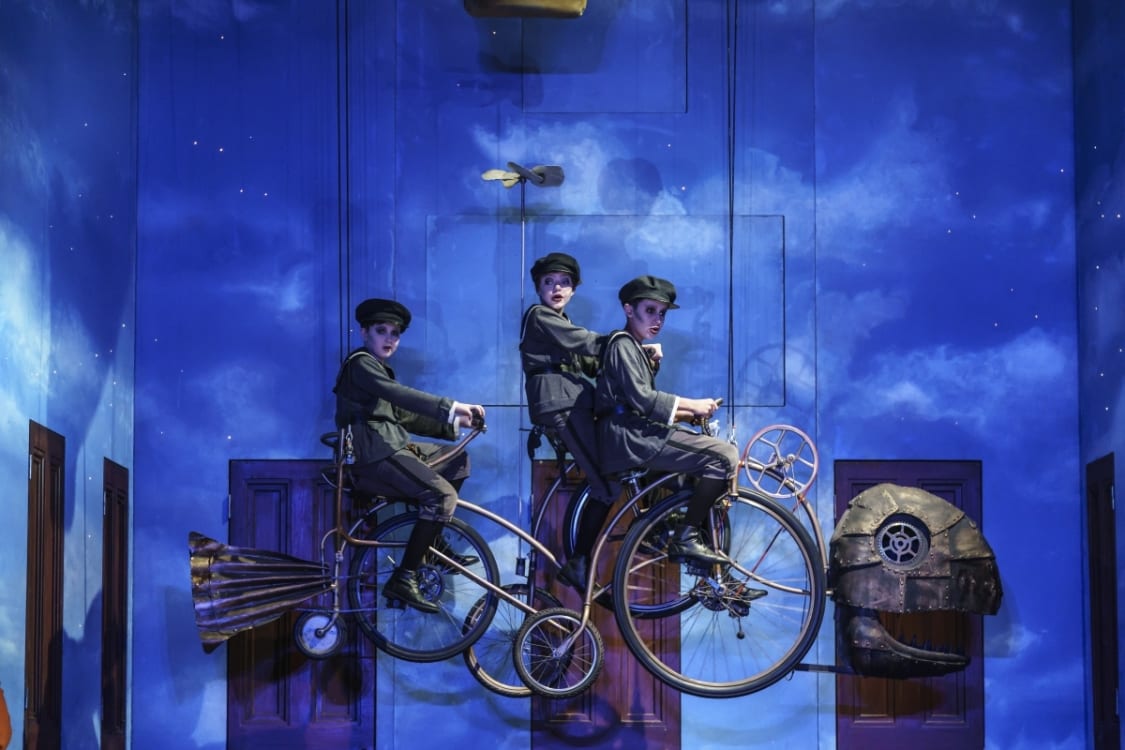How can you not love an opera that begins with the hero running on stage pursued by a giant lobster, screaming for help, and fainting? This charming revival of Dominic Cooke’s production for WNO craftily ticks all the ingenious boxes that Mozart and his disreputable collaborator Schikaneder constructed to enthral the audience at the Theater auf der Wieden in the autumn of 1791. This is a work that was written for ordinary folk, not the snooty Viennese nobility and its enduring popularity – this is one of five productions being mounted in the UK this year – is a testament both to the charm of the simple ‘fairy tale’ story and to the sublime musical moments Mozart wove into the work.
The simple story is of Tamino, a naïve prince who thinks he has been chosen to rescue a damsel in distress by her mother, the Queen of the Night. With the less-than-enthusiastic help of Papageno, a local lad dragooned into helping him, he discovers that, while the Princess Pamina is certainly a prisoner, the reasons for her captivity and for the Queen’s hatred of Sarastro, the wizard who is her jailer, are not what they seem. According to the conventional reading of the plot, we have a story of light and reason overcoming darkness and superstition, but like all good fairy stories, it has layers of meaning that provide inventive directors with plenty of scope for fresh approaches. If Sarastro sometimes looks like the grand master of a men-only freemasons lodge, then to have him succeeded by a man and woman jointly ruling the community must have been a bit of a shock for 1791 – but then there had been a revolution two years before in France.
This production hints gently at some of the contradictions embedded in the story and finds a visual language borrowed from Belgian surrealism to display them. The three spirits who come to help guide Tamino ride a flying bicycle with a bird’s head. Bowler hats, umbrellas, white clouds in blue skies – and bright colours that say “this is not the real world” – provide an eye-catching frame for the absurd events of Tamino’s quest.

As Tamino, tenor Ben Johnson provided the right blend of clumsy hero and ardent lover and made the most of his wonderful “falling in love at first sight of her picture” aria. Mark Stone was an effective Papageno with some charming comic touches, though his fine singing voice sounded a bit too aristocratic for my taste. Anita Watson was a marvellous Pamina – she was no helpless victim and proved a fearless companion for Tamino in their trials. Anna Siminska has the high icy soprano voice that makes the most of the Queen’s two fearsome arias but she might have been a bit scarier. Best of the lot was James Platt’s Sarastro. His happy combination of a commanding presence and a deep bass that seemed to come from the caverns below the Temple of the Wise was thrilling and the flashes of fury were properly scary. There was not a weak link in the many smaller roles and it was good to see the three spirits played by two boys and a girl – and sung very well too.
The splendid WNO orchestra and chorus, well marshalled by Damian Iorio, were as ever on fine form. Difficult to say then why the performance did not reach the heights that this sublime pantomime can sometimes reach. Maybe first night nerves, maybe a lack of chemistry between Tamino and Papageno, maybe the absence of a fresh take on the meaning of the fairy tale? It was a charming and enjoyable performance but probably not one that will live long in the memory amidst the flood of ‘Flutes’ that is on the way.

